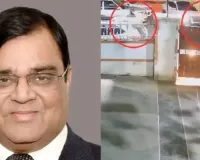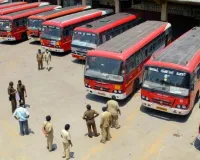Bullet train project update: Japan agrees to provide E10 Shinkansen trains on Mumbai-Ahmedabad corridor

In a significant development for the bullet train project under the strategic partnership between India and Japan, the Japanese government has agreed to introduce next-generation E10 Shinkansen trains for the high-speed train corridor between Mumbai and Ahmedabad. The Indian Railways confirmed that the 508-km-long corridor is being built using Japanese Shinkansen technology. The E10 trains, set to replace the current E5 model, will be launched simultaneously in both countries.
Officials also noted that construction work is progressing well, with 15 river bridges completed and work on four others nearing completion.
What are E10 Shinkansen trains?
The E10 Shinkansen is a next-generation high-speed train developed in Japan as the successor to the E5 series. The E5 is currently in service on Japan’s Tōhoku Shinkansen line and is known for its sleek design, high speed of up to 320 km/h, and advanced safety and comfort features. The E10 aims to build on this by offering even greater performance, improved aerodynamics, better energy efficiency, and enhanced passenger comfort.
Although official technical details are still limited, the E10 is expected to introduce advancements in noise reduction and ride stability, making it one of the most sophisticated high-speed trains ever developed. It is designed with the future of rail travel in mind and is intended to be environmentally friendly and technologically advanced.
A major highlight is that the E10 Shinkansen will be introduced simultaneously in Japan and India. In India, it will run on the 508-kilometre Mumbai-Ahmedabad bullet train corridor, which is being built with Japanese assistance using Shinkansen technology. This will mark the first time such advanced high-speed rail technology is deployed outside Japan at the same time as its domestic rollout, symbolising the strategic partnership between the two nations.
Undersea tunnel section between BKC and Thane completed
A major breakthrough was achieved on Monday with the completion of tunnelling work for the first section of the 21-km-long undersea tunnel connecting BKC and Thane. The Railway Ministry highlighted that tunnelling between Ghansoli and Shilphata in Maharashtra marks a significant milestone in the bullet train project. So far, 310 km of viaduct construction has also been completed. Rapid progress is being made in track laying, station construction, bridge work, and the installation of overhead electrical wires.
Procurement of operational and control systems is also underway.
https://twitter.com/AshwiniVaishnaw/status/1944792484569116706?ref_src=twsrc%5Etfw%7Ctwcamp%5Etweetembed%7Ctwterm%5E1944792484569116706%7Ctwgr%5E950813ccd8cc505c7e284028ccf7b59387909d18%7Ctwcon%5Es1_&ref_url=https%3A%2F%2Fwww.indiatvnews.com%2Fnews%2Findia%2Fbullet-train-project-update-japan-agrees-to-provide-e10-shinkansen-trains-on-mumbai-ahmedabad-corridor-2025-07-15-999018
BKC station to be an engineering landmark
The Ministry shared details of the upcoming BKC station, describing it as an engineering marvel. Positioned 32.5 metres underground, the station’s foundation is designed to support a 95-metre-tall building above ground. This ambitious infrastructure is central to the bullet train project’s vision. The Ministry further noted that the success of the Mumbai-Ahmedabad High-Speed Rail (MAHSR) project is paving the way for future bullet train corridors across India, with several new routes currently under consideration.
About The Author
Welcome to Aryan Age, an English newspaper that has been serving readers since 2011 from Delhi. With a loyal circulation of over 19,000, we are dedicated to providing our readers with the latest news and information, as well as insightful analysis and commentary that help them navigate the complex and rapidly changing world.










Comment List